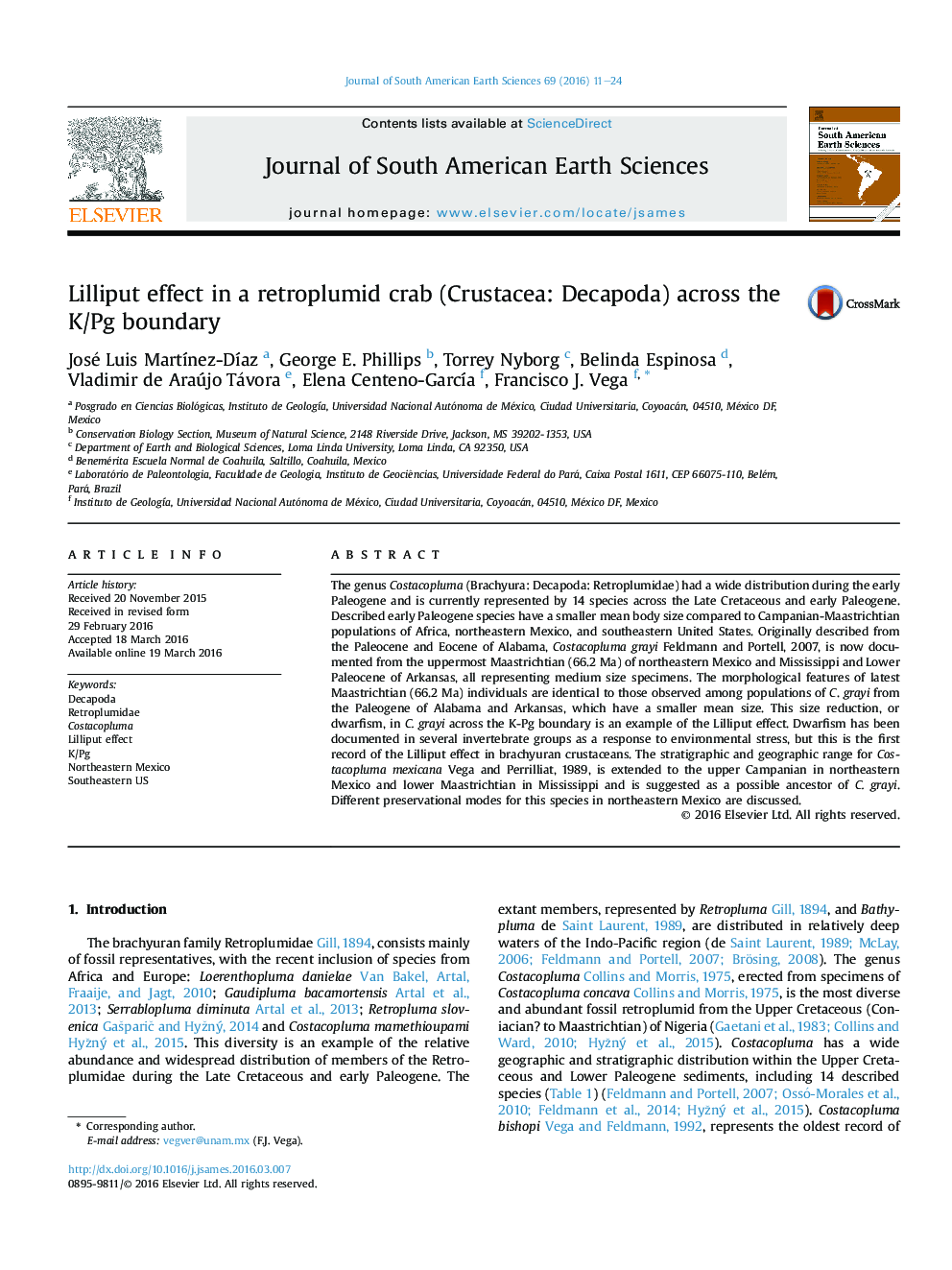| کد مقاله | کد نشریه | سال انتشار | مقاله انگلیسی | نسخه تمام متن |
|---|---|---|---|---|
| 4682067 | 1635141 | 2016 | 14 صفحه PDF | دانلود رایگان |

• First report of a decapod crustacean species to survive the K/Pg event.
• Lilliput effect discussed as survivor strategy for one species of crab.
• Interpretation of different style of preservation in a single crustacean species.
• New specimens documented from the Cretaceous o USA, Mexico and Brazil.
The genus Costacopluma (Brachyura: Decapoda: Retroplumidae) had a wide distribution during the early Paleogene and is currently represented by 14 species across the Late Cretaceous and early Paleogene. Described early Paleogene species have a smaller mean body size compared to Campanian-Maastrichtian populations of Africa, northeastern Mexico, and southeastern United States. Originally described from the Paleocene and Eocene of Alabama, Costacopluma grayi Feldmann and Portell, 2007, is now documented from the uppermost Maastrichtian (66.2 Ma) of northeastern Mexico and Mississippi and Lower Paleocene of Arkansas, all representing medium size specimens. The morphological features of latest Maastrichtian (66.2 Ma) individuals are identical to those observed among populations of C. grayi from the Paleogene of Alabama and Arkansas, which have a smaller mean size. This size reduction, or dwarfism, in C. grayi across the K-Pg boundary is an example of the Lilliput effect. Dwarfism has been documented in several invertebrate groups as a response to environmental stress, but this is the first record of the Lilliput effect in brachyuran crustaceans. The stratigraphic and geographic range for Costacopluma mexicana Vega and Perrilliat, 1989, is extended to the upper Campanian in northeastern Mexico and lower Maastrichtian in Mississippi and is suggested as a possible ancestor of C. grayi. Different preservational modes for this species in northeastern Mexico are discussed.
Journal: Journal of South American Earth Sciences - Volume 69, August 2016, Pages 11–24